I don't have any aspirations to be a travel writer, but I think I have found the exception.
A few weeks ago I had the great pleasure of accompanying a group of physics students from
UCC on a trip to the
Observatorio del Teide, an IAC run observatory perched high up on
Mt Teide, Tenerife. There were eight of us in our party. Five students,
Dr. Paul Callanan, Stephen Bean (The university film maker) and myself. My role over the seven days was mainly as the filming assistant and sound technician, that is to say; holding the microphone in the interviewees faces. I also had my own, nocturnal agenda.
We would set out from Dublin airport. The flight which was just over four hours, took us to the Canaries and the island of Tenerife. On approach, noticing the gigantic conical volcano of Mt Teide is unavoidable. It rises high out of the clouds where the inversion zone prevents low hanging cloud from rising up the slopes. It is truly breathtaking.
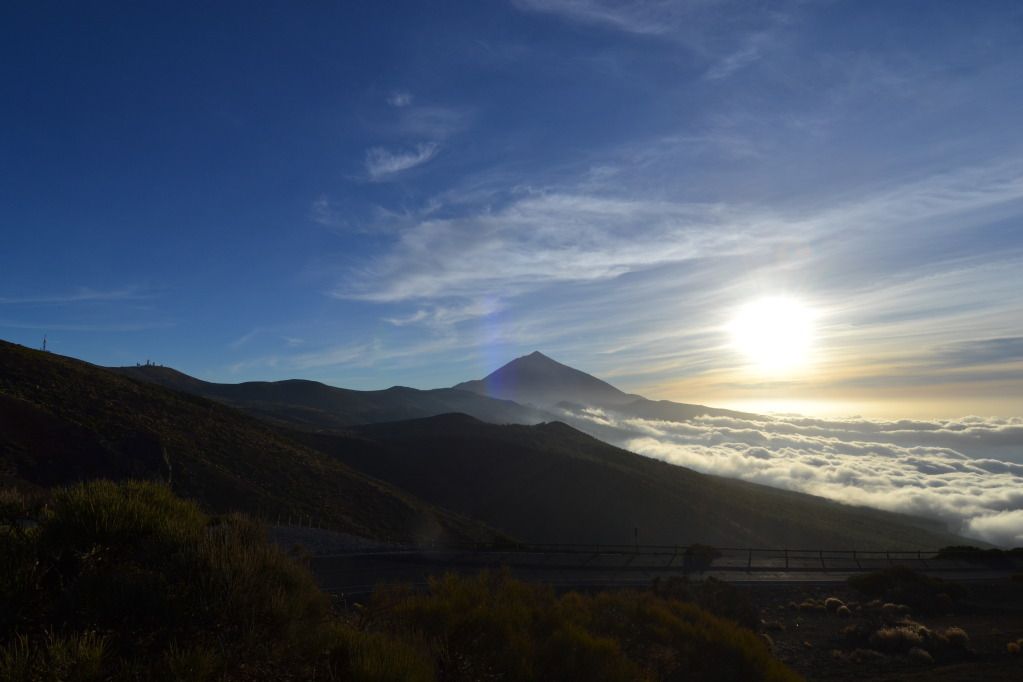 |
| This photo, for me really encapsulates the majestic beauty of the island of Tenerife. You can just see the observatory to the left of Mt Teide. If I could choose one place in the world as my office, this would be it. |
Accommodation for the film crew (Myself and my father) consisted of B&B style lodgings in a little village called Arafo, which is situated about 4km inland and about 500m up the side of the island. Although this meant a forty minute drive up and down from the observatory every day, it gave us some great opportunities to film some scenic shots and cut-aways. I will forever associate popping ears and the smell of roasted break pads with Tenerife. The science team meanwhile, stayed in the accommodation provided by the observatory itself. This consists of La Residencia and some communal dorms, both of which are available at varying, but not wholly unreasonable rates.

The observatory itself is amazing. With over twenty telescopes, the landscape is dotted with the familiar white domes, and some with very unusual enclosures. When visiting the observatory during the day, we could watch the various solar telescopes tracking the sun throughout, from morning until the evening. In fact the most unusual structure I had seen belonged to one of these solar scopes. The 70cm VTT or Vacuum Tower Telescope.
 |
| The enormous structure, housing the VTT solar telescope |
While the astronomers sleep during the day, those with scheduled telescope time during the night would actually rise a number of hours before sundown in order to make sure the telescope is running smoothly and to take calibration images. This was no different for our group of physics students. The evenings, or morning for them, would generally consist of calibration, dinner and then back to the telescope to get ready for the nights observing. The telescope we had booked observing time on, was the IAC80.
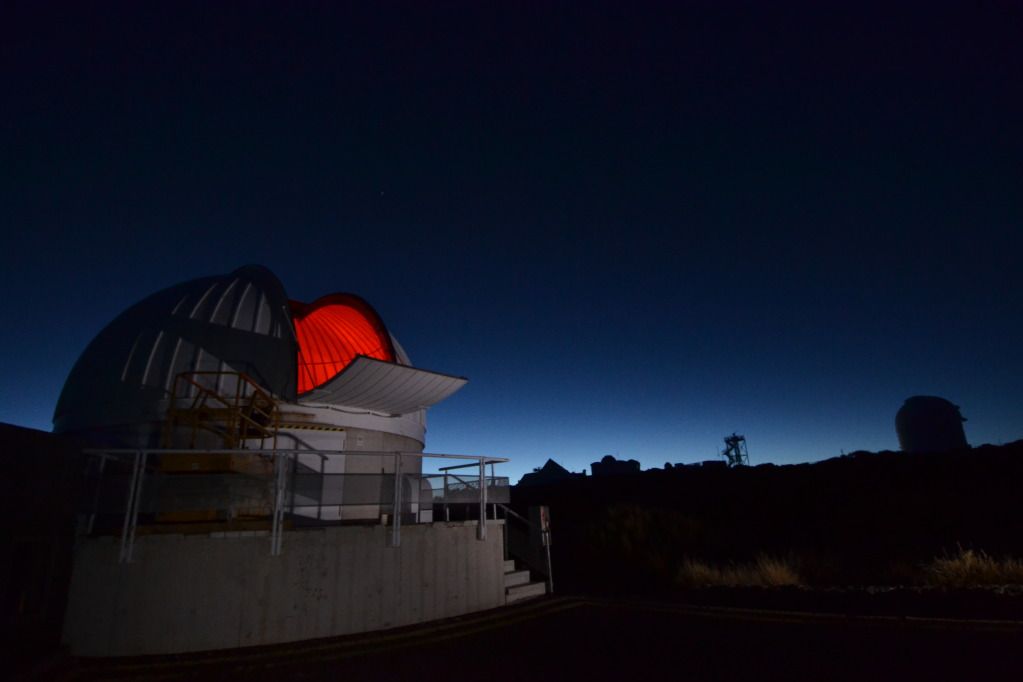 |
| The open dome of the IAC80 |
The IAC80 is an 82cm cassagrain type telescope and sits on a quite unusual German equatorial mount. Unusual, because the scope itself is held by a fork and the fork is situated where the polar scope would be on a more familiar amateur German equatorial mount. Construction of this particular telescope began in 1980, and was finally completed in 1991. A fun bit of trivia; because it took so long to complete, it was given the symbol of a snail.
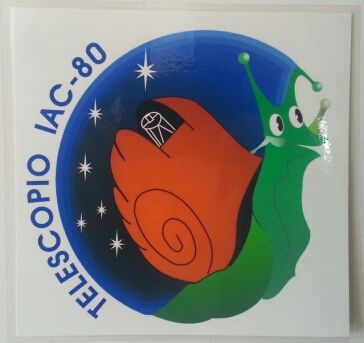 |
| The IAC80s snail symbol on the door of the dome building. |
Although the whole trip was scientifically a success, the observing nights were not without glitches. The IAC80 proved to be a little temperamental during our visit and we encountered a few minor issues, such as a dome that refused to rotate, refused to stop rotating, some software issues and one night, some high altitude cloud rolled in to cut the end of the night short. Obviously they weren't able to control the weather, but our fantastic telescope operators were ever at hand to help out and get the observing back on track.
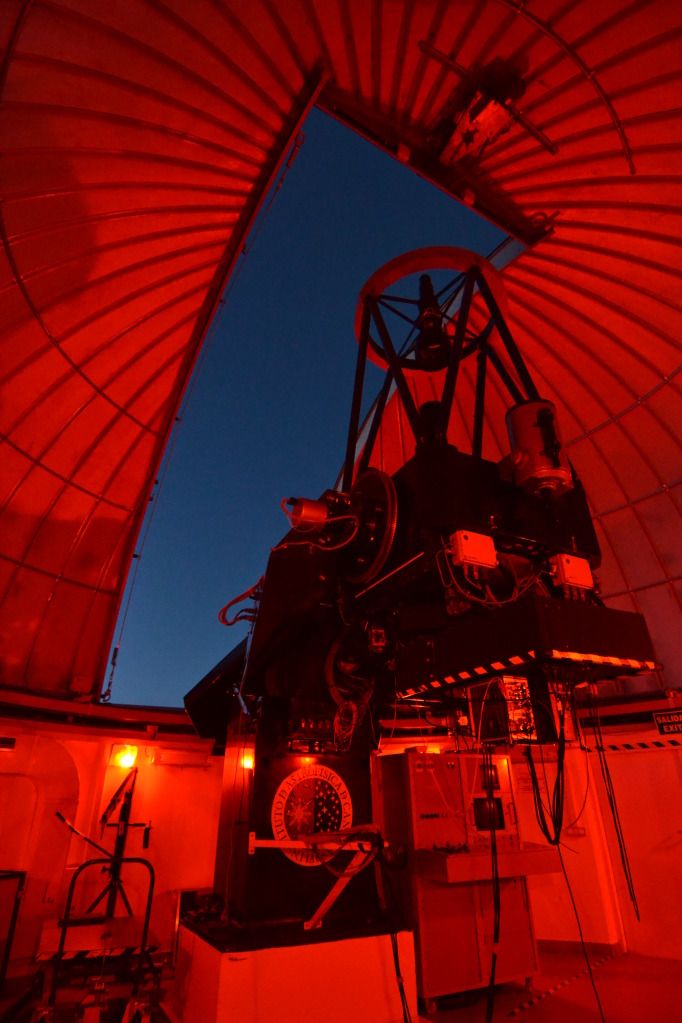 |
| An amazing bit of mechanical and optical engineering. The IAC80 under the sky and washed with the red light of the dome. |
In all, the IAC80 provided the team with sufficient data of a black hole binary system called SWIFT J1910.2-0546, which was the primary target for the whole trip. It also produced some excellent images of various deep sky objects, including the pillars of creation in M16 The Eagle Nebula.
In part two I will write about the science in a bit more detail and post some images the team was able to acquire. I was also able to do some astrophotography of my own which I will include.




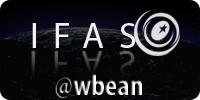





No comments:
Post a Comment